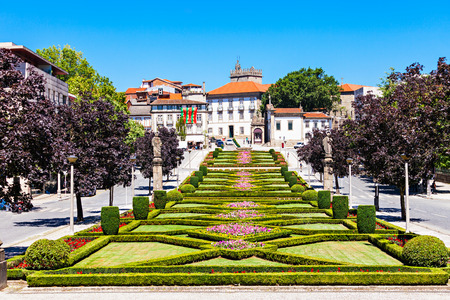【托福听力资料】托福官方真题Official18 听力文本——Lecture 2(原TPO)
- 2015年11月02日17:43 来源:小站整理
- 参与(0) 阅读(5656)
众所周知,托福官方真题Official材料是备考托福听力最好的材料。相信众多备考托福的同学也一直在练习这套材料,那么在以下内容中我们就为大家带来托福官方真题Official听力练习的文本,希望能为大家的备考带来帮助。
官方真题Official 18 Lecture 2 Art History
A: Today we’ll continue our examination of ancient Roman sculpture. We’ve already looked at portrait sculpture which are busts created to commemorate people who had died, and we’ve looked at relief sculpture, or sculpting on walls. And today we’ll look at yet another category of sculpture-made copies of famous Greek sculptures.
B: Why did they do that?
A: Well no one knows for sure. You see, in the late 4th century B.C., the Romans began a campaign to expand the Roman Empire, and in 300 years they had conquered most of the Mediterranean area and parts of Europe. You know the saying, copies. Roman sculptors often “To the victor belong the spoils”? Well, the Roman army returned to Rome with many works of Greek art. It’s probably fair to say that the Romans were impressed be Greek art and culture and they began making copies of the Greek statues. Now the dominant view in traditional art his that Roman artists lacked creativity and skill especially compared to the Greek artists who came before them. Essentially, the traditional view, a view that’s been prevalent for over 250 years, is that the Romans copied Greek sculptures because they couldn’t create sculpture of their own. But finally some contemporary art historians have challenged this view. One is Elaine Gazda . Gazda says that there might be other reasons that Romans made copies. She wasn’t convinced that it was because of a lack of creativity. Can anyone think of another possible reason? Well maybe they just admired these sculptures. You know, they liked the way they looked. Yes. That’s one of Gazda’s points. Another is that while nowadays reproduction is easy, it was not so easy in Roman times. Copying statues required a lot of skill, time and effort. So Gazda hypothesizes that copying didn’t indicate a lack of artistic imagination or skill on the part of Roman artists, but rather the Romans made copies because they admired Greek sculpture. Classical Greek statues represented an idealization of the human body and were considered quite beautiful at the time. Gazda also believes that it’s been a mistake to dismiss the Roman copies as, well, copies for copy’s sake and not to consider the Roman function and meaning of the statues.
B: What do you mean the Roman function? Weren’t they just for decoration?
A: Well, not necessarily. Under the Emperor Augustus at the height of the Roman Empire, portrait statues were sent throughout the empire. They were supposed to communicate specific ideas about the emperor and the imperial family and to help inhabitants of the conquered areas become familiar with the Roman coins were also distributed throughout the empire. Anybody care to guess what was on them?
The emperor’s face? That’s right! The coins were easy to distribute and they allowed people to see the emperor or at least his likes and served as an additional reminder to let them know, well, who was in charge. And the images helped people become familiar with the emperor. Statues of him in different roles were sent all over the empire. Now, actually some Roman sculptures were original but others were exact copies of Greek statues and some Roman sculptures were combinations of some sort. Some combined more than one Greek statue and others combined a Greek god or an athlete with a Roman’s head. At the time of Julius Caesar, I wasn’t uncommon to create statues that had the body of a god and the head of an emperor. And the Romans were clever. What they did was they made plaster casts from molds of the sculptures. Then they shipped these plaster casts to workshops all over the empire, where they were replicated in marble or bronze. And on some statues the heads were removable. They could put an emperor’s head on different bodies, showing him doing different things. And then later when then time came they could even use the head of the next emperor on the same body.
希望这些对你的托福备考有帮助,预祝大家托福考试能取得理想成绩。





































